|
By the time I started high school, I had already wanted to be a palaeontologist for almost a decade. With the internet not really being a “thing” back then (at least not in my parents’ house), I lapped up any fossil stories that made the news; however, back then I was not in the habit of reading the newspaper much myself. Instead, I have my grandma to thank for helping me to keep abreast of the latest news. Every day she would read the newspaper from cover to cover, and if she found anything palaeontological, she would cut it out, write the date and the name of the paper on it, and give it to me whenever she next saw me. Although Grandma passed away more than fourteen years ago, I still have the books in which I glued all the clippings she gave me. I never intend to part ways with them — they are testament to the support she gave me in pursuing a palaeontological path, and I probably would not be anywhere near where I am now without her encouragement. So strong was the influence she had on me that I dedicated by Ph.D. to her memory. If I remember correctly, it was in one of the clipping that Grandma gave me, back in 1998, that I first found out about a new Argentinean theropod dinosaur. It had been given a very evocative name — Megaraptor, or “big plunderer” — and I could only imagine what it would have looked like as a living animal. The article even had an artist’s impression of the animal, which made it look like a scaled-up Deinonychus or Velociraptor. This was because, based on the bones at hand, Megaraptor had been interpreted as having a huge, sickle-like claw on its foot. Oh, how times have changed since then… From the top The type specimen of Megaraptor namunhuaiquii was collected from the Portezuelo Formation by a National Geographic Society-backed field crew, led by Fernando Novas. Novas named and described Megaraptor in a 1998 paper in Journal of Vertebrate Paleontology, and it is fair to say it sparked a media frenzy. The new theropod was not known from much material: an ulna (forearm bone), a manual phalanx (finger bone), an incomplete metatarsal (upper toe bone), and a claw. However, in terms of scale, the claw was practically off the charts: at almost 34 cm long, measured along the outer curve, it was gigantic. Novas compared the specimens with other theropod dinosaurs and determined that the claws on the second toes of dromaeosaurs and troodontids were most similar to that of Megaraptor. However, he also noted similarities between the ulna and those of more “primitive” theropods, and between the metatarsal and those of more “advanced” theropods called coelurosaurs. In the end, Novas conceded that robustly placing Megaraptor on the theropod family tree was not really possible based on the evidence at hand. As such, he classified it tentatively as a coelurosaur that had possibly converged with troodontids and dromaeosaurs by evolving an enlarged claw on its second toe. Our understanding of Megaraptor’s true nature did not advance until 2004, when Jorge Calvo and colleagues (including Novas) announced the discovery of a new specimen on the north shore of Lago Barreales. This Megaraptor was more complete than the original, preserving vertebrae from the neck and tail, parts of the shoulder and pelvis, a partial metatarsal and — amazingly — a complete forearm and hand. The latter was critical: a phalanx (finger bone) identical to that from the original Megaraptor specimen was present in the first finger, and right next to it was a huge, sickle-like claw, uncannily like the original! This showed, beyond any doubt, that the massive claw from original specimen did not belong to the foot at all, but was a hand claw. A slightly smaller, yet chunkier, claw was present on the second finger, and a relatively tiny claw tipped the third and final finger. Using both the original specimen and the new one, Calvo and colleagues attempted to work our Megaraptor’s position on the theropod family tree. Despite having the new specimen available, they still found it difficult to place it! They identified some features that Megaraptor shared with carcharodontosaurids (“shark-toothed lizards”), others more in line with far more basal theropods, and others that seemed to be convergent with spinosaurids. These authors ultimately concluded that Megaraptor was unique — that it represented a heretofore unknown group of theropods, characterised by massive, raptorial hands, that was probably not a part of Coelurosauria. It was to be another decade before a substantial advance in our understanding of Megaraptor itself was made. In 2007, two short papers specifically focused on Megaraptor were published by Juan Porfiri and colleagues: one suggested that it was gregarious (based on rather meagre evidence, in my mind), whereas the other attempted to determine its hunting mode and predatory adaptations based on the 2004 specimen. However, the more important advances to take place between 2004 and 2014 only partially involved Megaraptor itself: instead, the description of several new species, including the Australian Australovenator, allowed Megaraptor to be linked with other theropods around the world, and to the recognition (by Roger Benson and colleagues) of two new groups of theropods, one nested within the other. The less inclusive group was dubbed Megaraptora, and it included the eponymous Megaraptor along with Australovenator, the Japanese Fukuiraptor and the Argentinean Aerosteon and Orkoraptor. The more inclusive group, within which Megaraptora was nested, was termed Neovenatoridae, and allowed the British Neovenator and the Chinese Chilantaisaurus to join the party. The idea of a unified Megaraptora within Neovenatoridae was happily accepted by many scientists until 2013 when Fernando Novas and colleagues published a paper summarising the theropods from Patagonia. In it, they attempted to assess the relationships of Argentina’s carnivorous dinosaurs, and their analysis placed Megaraptor and its kin within Coelurosauria — as originally proposed by Novas in 1998. More bizarrely, however, Novas and colleagues suggested that megaraptorans were possibly closely related to tyrannosauroids. On the face of it, this would be very odd: advanced tyrannosauroids are characterised by having tiny arms tipped with small claws, in stark contrast to the huge arms and trenchant sickle-like claws of megaraptorans. Nevertheless, this idea was lent further support in 2014 when Juan Porfiri and colleagues described a juvenile Megaraptor specimen from the northern shore of Lago Barreales that seemed to show similarities to very “primitive” tyrannosauroids, i.e. those that had not yet taken on the typical huge head + tiny arms body plan of Tyrannosaurus and its close kin. My experience with Megaraptor, and megaraptorids The three key Megaraptor specimens — the type specimen, the referred specimen with a complete hand, and the juvenile — are held in three separate places within Neuquén Province, despite the fact that two of them are registered in the same collection. The original Megaraptor specimen is held in Plaza Huincul at Museo Carmen Funes (where Anabisetia and Argentinosaurus are also held), the specimen with complete hand is held at the Proyecto Dino Museum on the north shore of Lago Barreales, and the juvenile is held in the Earth Sciences Department at the Universidad Nacional de Comahue. Within a fortnight that was otherwise occupied with the study of ornithopods (and very few technological hiccups, thank goodness), I had seen and studied all three specimens — I spent half a day on the type specimen, almost two full days with the full hand and its associated material, and a rather tight four hours with the juvenile! I came away from this absolutely convinced that the original specimen and the one with a complete hand represented the same species, although I still have a few doubts about the juvenile (although I am convinced it is a megaraptoran: it is very similar to some other megaraptoran species). All three specimens were a joy to work with. The most exciting for me personally, though, was the one at Lago Barreales. Seeing every single bone in the hand, in exactly the right place, and being able to make fresh observations (and take photographs) of those specimens has helped me to understand just how variable the bones of the megaraptoran hand truly are, which will hopefully enable isolated finger bones to be identified correctly when they come to light. Having studied the remains of Australovenator wintonensis and now Megaraptor namunhuaiquii firsthand, I can attest to how similar they are to one another (with Australovenator being significantly smaller). I can also state that seeing these specimens has been exceedingly useful in my ongoing research on Victorian Cretaceous theropod dinosaurs — some new megaraptoran remains will hopefully be published on from Cape Otway quite soon, and this paper will be greatly enhanced now that I've seen so much of Megaraptor! References Benson, R.B.J., Carrano, M.T. & Brusatte, S.L., 2010. A new clade of archaic large-bodied predatory dinosaurs (Theropoda: Allosauroidea) that survived to the latest Mesozoic. Naturwissenschaften 97, 71–78. Calvo, J.O., Porfiri, J.D., Veralli, C.D.J. & Novas, F.E., 2002. Megaraptor namunhuaiquii (Novas, 1998), a new light about its phylogenetic relationships. I Congresso Latinoamericano de Paleontologia de Vertebrados, Octubre de 2002, Santiago de Chile, en calidad de Expositor. Calvo, J.O., Porfiri, J.D., Veralli, C., Novas, F. & Poblete, F., 2004. Phylogenetic status of Megaraptor namunhuaiquii Novas based on a new specimen from Neuquén, Patagonia, Argentina. Ameghiniana 41, 565–575. Hocknull, S.A., White, M.A., Tischler, T.R., Cook, A.G., Calleja, N.D., Sloan, T. & Elliott, D.A., 2009. New mid-Cretaceous (latest Albian) dinosaurs from Winton, Queensland, Australia. PLOS One 4, e6190. Novas, F.E., 1998. Megaraptor namunhuaiquii, gen. et sp. nov., a large-clawed, Late Cretaceous theropod from Patagonia. Journal of Vertebrate Paleontology 18, 4–9. Novas, F.E., Agnolín, F.L., Ezcurra, M.D., Porfiri, J. & Canale, J.I., 2013. Evolution of the carnivorous dinosaurs during the Cretaceous: the evidence from Patagonia. Cretaceous Research 45, 174–215. Porfiri, J.D., Calvo, J.O. & Dos Santos, D., 2007. Evidencia de gregarismo en Megaraptor namunhuaiquii (Theropoda, Tetanurae), Patagonia, Argentina. In 4th European Meeting on the Palaeontology and Stratigraphy of Latin America. Cuadernos del Museo Geominero, 8. Díaz-Martínez, E. & Rábano, I., eds, Instituto Geológico y Minero de España, Madrid, 323–326. Porfiri, J.D., Dos Santos, D. & Calvo, J.O., 2007. New information on Megaraptor namunhuaiquii (Theropoda: Tetanurae), Patagonia: considerations on palaeoecological aspects. Arquivos do Museu Nacional, Rio de Janeiro 65, 545–550. Porfiri, J.D., Novas, F.E., Calvo, J.O., Agnolin, F.L., Ezcurra, M.D. & Cerda, I.A., 2014. Juvenile specimen of Megaraptor (Dinosauria, Theropoda) sheds light about tyrannosauroid radiation. Cretaceous Research 51, 35–55.
1 Comment
Solicitar un préstamo ahora
1/23/2024 10:41:33 am
Buenos días señor / señora,
Reply
Leave a Reply. |
Stephen PoropatChurchill Fellow (2017) on a palaeo-tour of Argentina! Archives
December 2018
Categories |
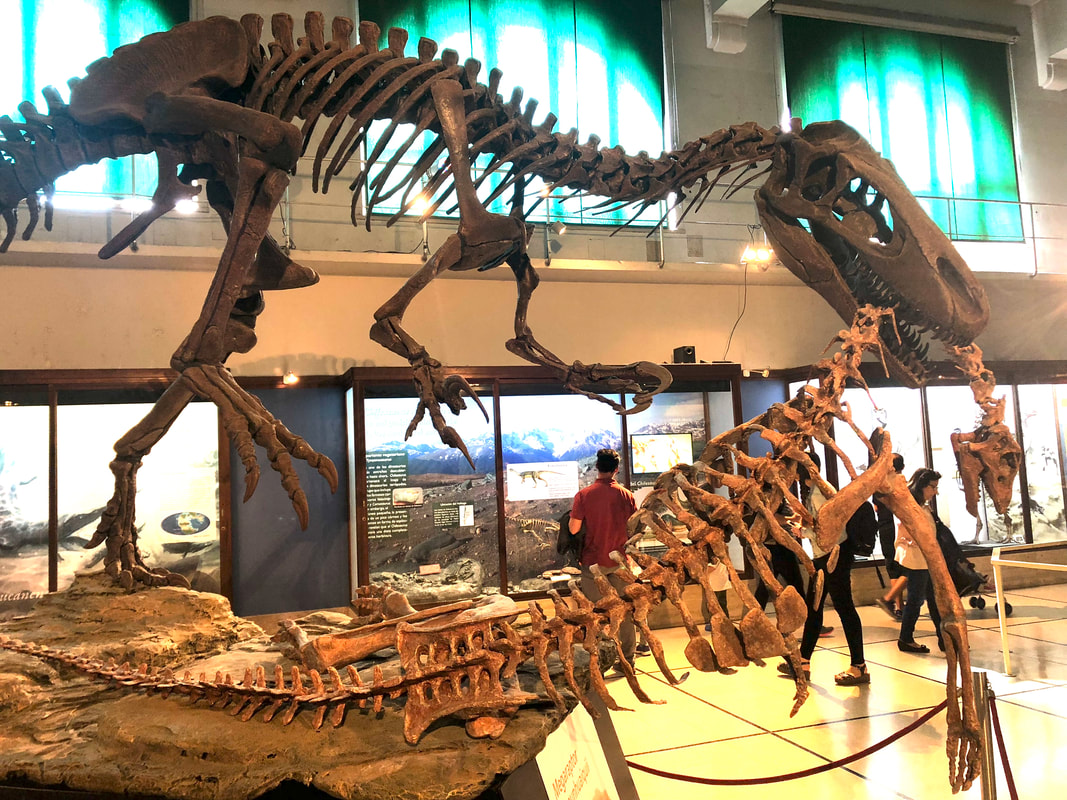
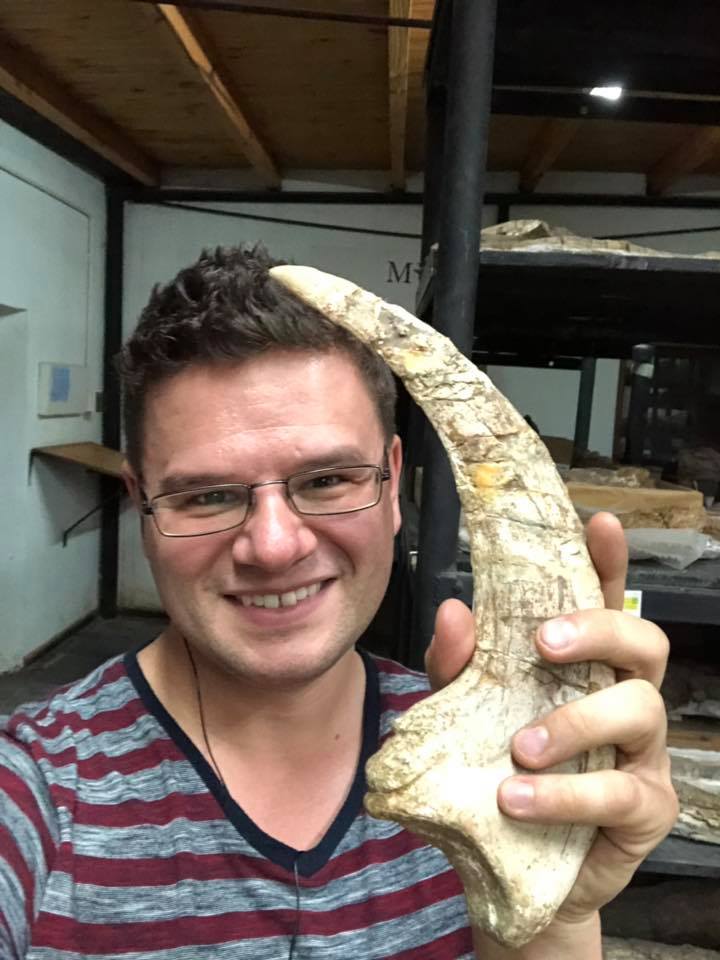
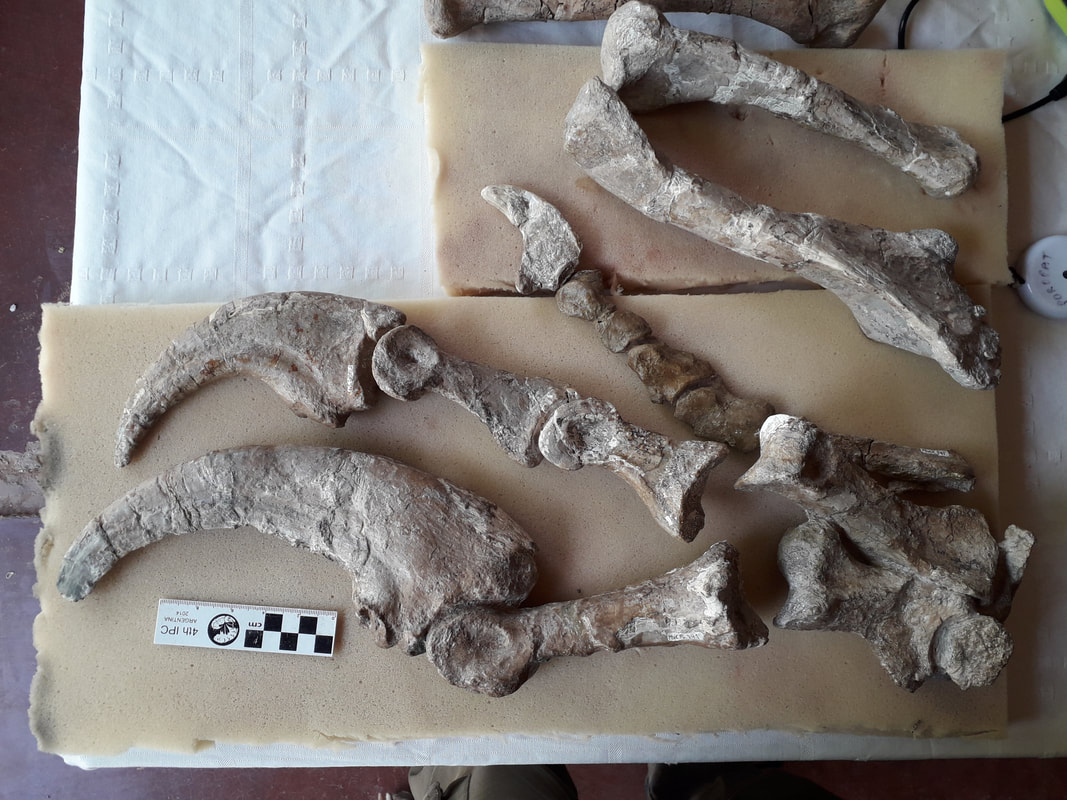
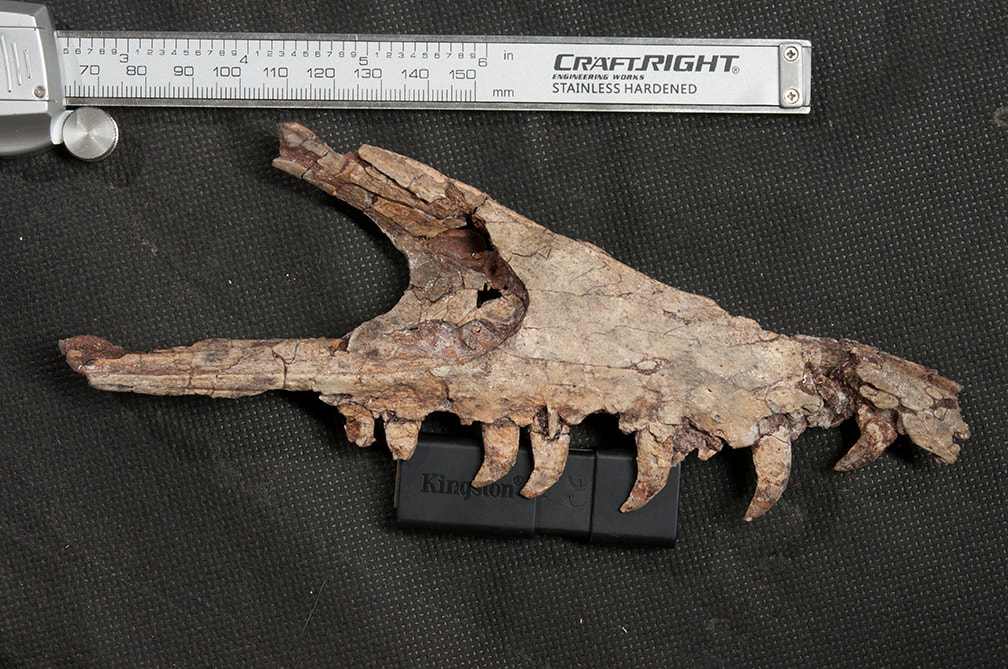
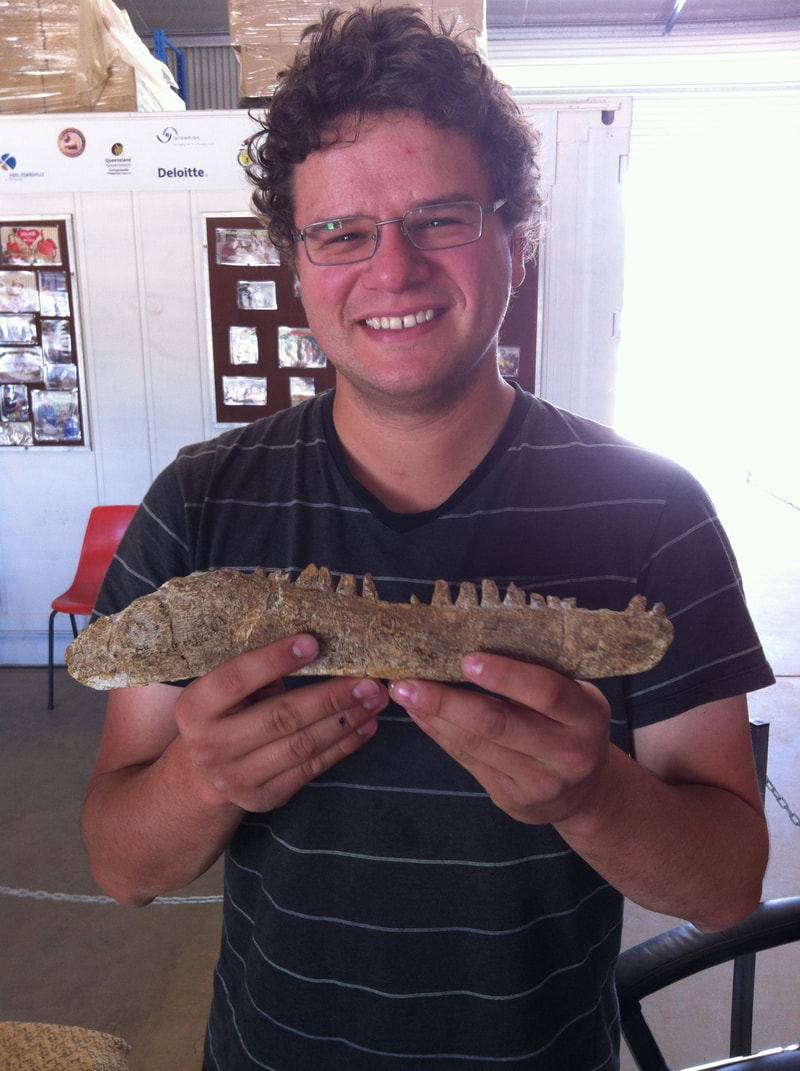
 RSS Feed
RSS Feed
